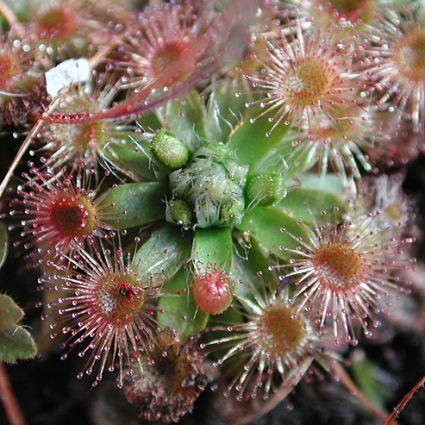
Classical botanical experiments show that carnivorous plants are not absolutely dependent on the acquisition of fixed-N from the animals, rather the additional animal-derived N significantly enhances both flower and seed formation. The main aim of carnivorous plants is to mobilize amino acids from the proteins of their prey. They generally occur at N-limited sites, such as bogs, swamps, or moors. Carnivorous plants ( Drosera, Nepenthes, Dionaea, Sarracenia, Pinguicula, Utricularia, and others) belong to diverse plant families of unrelated taxonomic affinities. The biology of plants that eat animals ( carnivorous plants) is fascinating.

Hermann Bothe, Harold Drake, in Biology of the Nitrogen Cycle, 2007 26.3 Plants eating animals (carnivorous plants) to get access to an extra N-source He also found that reproduction in the plant is limited by pollen availability, indicating that feeding on its pollinators reduces plant fitness. This characteristic creates important conservation concerns in many parts of the world where atmospheric input of anthropogenic nitrogen is significantly increasing nitrogen availability in previously nitrogen-poor bogs and fens.Īnother fitness cost of carnivory was identified by Zamora (1999), who found that Pinguicula vallisneriifolia tends to trap its own pollinators. Because of their compromised competitive ability, carnivorous plants generally respond poorly to addition of nutrients to their habitat, being easily outcompeted by plants that thrive under richer conditions. Small stature and slow growth also make many carnivorous plants (e.g., Pinguicula and Utricularia) vulnerable to being buried by litter fall ( Brewer, 1998, 1999a, b). The plant responds to competition from neighboring vegetation by diverting resource allocation from pitchers to regular leaves ( Brewer, 1999a, b).

This hypothesis is supported by studies of the pitcher plant Sarracenia alata, which produces two kinds of leaves, a “regular” leaf and one that is modified into a pitcher. For example, it has been argued that leaves morphologically specialized for prey capture have compromised photosynthetic abilities, making carnivorous plants poor competitors. Their slow growth and restricted distribution suggests that there are fitness costs associated with carnivory. Simms, in Encyclopedia of Biodiversity (Second Edition), 2013 Costs of CarnivoryĬarnivorous plants are usually restricted to sunny, moist, nutrient-poor habitats, such as bogs and fens.


 0 kommentar(er)
0 kommentar(er)
